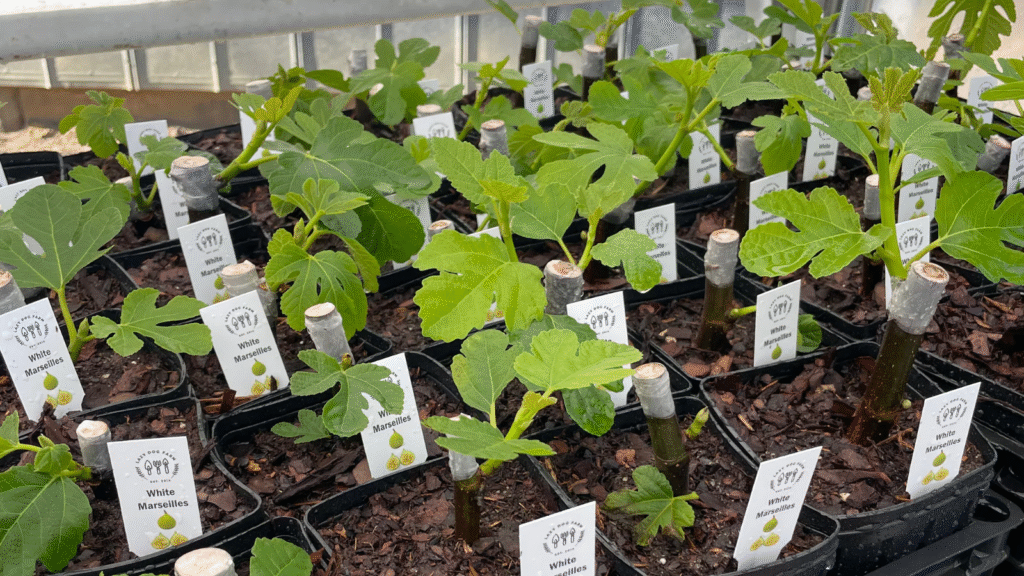Starting a fig tree business from home can be a rewarding and profitable venture if planned correctly. Whether you aim to sell fresh figs, dried figs, fig plants, or value-added products like jams and preserves, a well-structured business plan is essential for success. This guide will walk you through the key steps to create a comprehensive fig tree business plan that covers market research, cultivation strategies, financial planning, and marketing approaches.
1. Understanding the Market for Your Fig Tree Business
Before diving into the fig tree business, it’s crucial to understand the market demand. Figs are popular for their nutritional benefits, unique flavor, and versatility in culinary applications. Research local and online markets to identify potential customers, including grocery stores, farmers’ markets, health food stores, and direct consumers.
Analyze competitors in your area—how they price their products, their distribution channels, and their marketing strategies. Determine whether there’s a niche you can fill, such as organic figs, rare fig varieties, or homemade fig-based products. Understanding market trends will help you position your fig tree business effectively and ensure steady demand for your products.
2. Choosing the Right Fig Varieties for Your Business
Selecting the right fig varieties is a critical step in establishing a successful home business fig. Some popular commercial varieties include:
- Black Mission Figs – Known for their sweet flavor and adaptability.
- Brown Turkey Figs – Hardy and suitable for various climates.
- Kadota Figs – Ideal for drying and canning.
- Celeste Figs – Small but highly flavorful, great for fresh consumption.
Consider your local climate, soil conditions, and intended products when choosing varieties. If space is limited, dwarf or container-grown fig trees can be an excellent option for a home-based fig tree business. Additionally, explore grafting techniques to cultivate multiple varieties on a single tree, maximizing productivity in a small area.
3. Setting Up Your Fig Tree Growing Space

One of the advantages of a fig tree business is that it can be started in a backyard, greenhouse, or even in containers. Here’s how to set up an efficient growing space:
A. Soil and Sunlight Requirements
Fig trees thrive in well-drained soil with a pH between 6.0 and 6.5. Ensure they receive at least 8 hours of sunlight daily for optimal growth and fruit production.
B. Planting and Spacing
If planting multiple trees, space them at least 10-15 feet apart to allow for root expansion. For container-grown figs, use large pots (20-25 gallons) with proper drainage.
C. Irrigation and Fertilization
Figs require moderate watering—avoid waterlogging, as it can cause root rot. Use organic fertilizers or compost to enhance soil fertility and promote healthy growth.
D. Pest and Disease Management
Common pests like fig beetles and birds can damage fruits. Use netting, organic pesticides, or companion planting (e.g., marigolds) to deter pests. Regularly inspect trees for diseases like fig rust or leaf blight.
4. Developing a Production and Harvesting Plan
A well-structured production plan ensures consistent supply for your fig tree business. Figs typically produce two crops per year—an early summer crop (breba) and a late summer/fall main crop.
- Pruning: Annual pruning improves yield and tree health. Remove dead branches and shape the tree for better sunlight penetration.
- Harvesting: Figs should be picked when fully ripe but still firm. Handle them gently to avoid bruising.
- Post-Harvest Handling: Store fresh figs at cool temperatures (30-32°F) to extend shelf life. For dried figs, use a dehydrator or sun-drying methods.
Consider staggering planting times or growing different varieties to ensure a continuous harvest throughout the season.
5. Financial Planning and Budgeting for Your Fig Tree Business
A solid financial plan is the backbone of any successful fig tree business. Consider the following expenses:
- Startup Costs: Includes purchasing saplings, soil, containers, irrigation systems, and tools.
- Operational Costs: Covers fertilizers, pest control, labor (if hiring help), and packaging materials.
- Marketing and Sales: Budget for website development, social media ads, farmers’ market fees, and branding.
Estimate your potential revenue based on yield per tree and market prices. For example, a mature fig tree can produce 50-100 pounds of fruit annually. If sold at $5 per pound, a small orchard of 20 trees could generate $5,000-$10,000 per year.
Explore additional income streams such as selling fig cuttings, value-added products (jams, syrups), or offering workshops on fig cultivation.
6. Marketing and Selling Your Fig Products
To make your fig tree business profitable, you need an effective marketing strategy:
- Direct Sales: Sell at farmers’ markets, local stores, or through a roadside stand.
- Online Sales: Create an e-commerce website or list products on platforms like Etsy, Amazon, or local food delivery apps.
- Social Media Marketing: Use Instagram, Facebook, and YouTube to showcase your fig products, share growing tips, and engage with customers.
- Subscription Model: Offer a seasonal fig subscription box for regular customers.
Building a brand around your fig tree business—such as organic, sustainably grown, or exotic fig varieties—can help differentiate your products and attract premium buyers.
7. Scaling Your Fig Tree Business
Once your home-based fig tree business gains traction, consider scaling up:
- Expand Cultivation: Lease additional land or partner with local farmers to increase production.
- Diversify Products: Introduce new fig-based items like fig vinegar, skincare products, or frozen figs.
- Wholesale Distribution: Approach supermarkets, restaurants, and health food distributors for bulk orders.
Networking with other growers and joining agricultural cooperatives can also provide valuable resources and market access.
Conclusion
Starting a fig tree business at home requires careful planning, but with the right approach, it can be a highly rewarding venture. By conducting thorough market research, selecting suitable varieties, optimizing growing conditions, and implementing strong financial and marketing strategies, you can build a profitable and sustainable business. Whether you’re selling fresh figs, dried products, or live plants, the demand for figs continues to grow—making now an excellent time to launch your fig tree business. With dedication and smart planning, your home-based fig enterprise can flourish into a thriving agricultural business.










